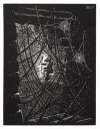Ernst
Ludwig Kirchner
Ernst Ludwig Kirchner was a foundational figure in German Expressionism, whose vibrant and emotive works significantly influenced the movement's direction. If you’re looking for original Ernst Ludwig Kirchner prints and editions for sale or would like to sell, request a complimentary valuation and browse our network’s most in-demand works.
Ernst Ludwig Kirchner art for sale
Discover Ernst Ludwig Kirchner prints for sale, exclusively available through our private network of collectors. Explore signed and unsigned screenprints, lithographs, digital prints, and rare editioned proof prints by era-defining blue chip artists.
Sell Your Art
with Us
with Us
Join Our Network of Collectors. Buy, Sell and Track Demand
Biography
Born in Aschaffenburg, Germany, in 1880, Ernst Ludwig Kirchner was drawn to art from an early age. He pursued architectural studies at the Dresden Technical University, where he met fellow artists who would later join him in founding the influential expressionist group, Die Brücke. His early works reflect a fascination with the modern city, imbued with vibrant colours and distorted perspectives to convey the psychological intensity of urban life.
In 1911, Kirchner moved to Berlin, where his style matured into a more angular and dynamic expressionism. He captured the chaotic energy of city life in paintings like Street, Berlin, where vivid colours and expressive lines conveyed the unsettling pace of modernity. His bold use of form and colour made his work instantly recognisable, cementing his status as a pioneer of German Expressionism.
Kirchner's move to Berlin marked a pivotal moment in his career. The urban landscape became a primary source of inspiration, leading to works that depicted the city's frenetic energy and social tensions. His woodcut prints, a technique he revived from the German Renaissance, became particularly prominent during this period, demonstrating his mastery in translating dynamic compositions into stark monochromatic forms.
The First World War brought immense psychological turmoil to Kirchner, whose health deteriorated significantly. His art took on darker tones, reflecting the trauma of war. The interwar years saw a brief resurgence in his work, but the rise of the Nazis in the 1930s led to his art being classified as “degenerate," resulting in the destruction of hundreds of his pieces. Retreating to Switzerland, he adopted a more subdued palette and focused on the natural landscape, though his expressive line work continued to reflect his earlier style. Despite the hardships he faced, his unwavering commitment to innovation ensured his place in art history as a trailblazer of Expressionism.


























